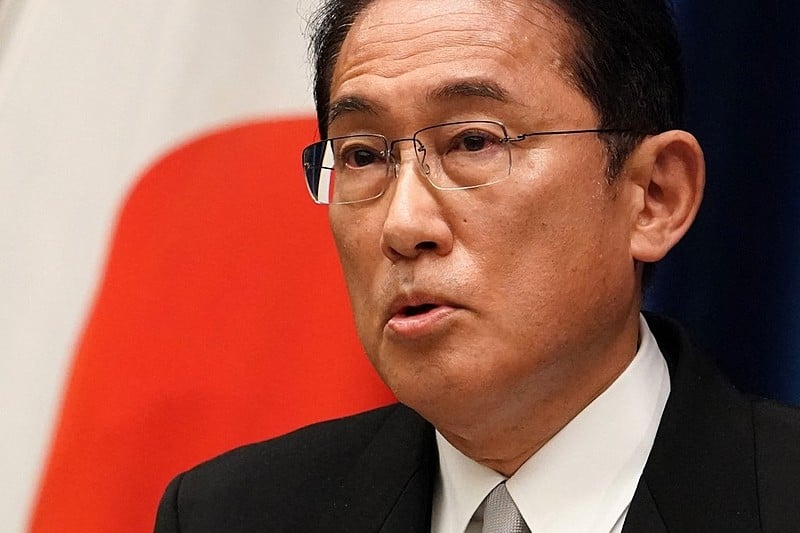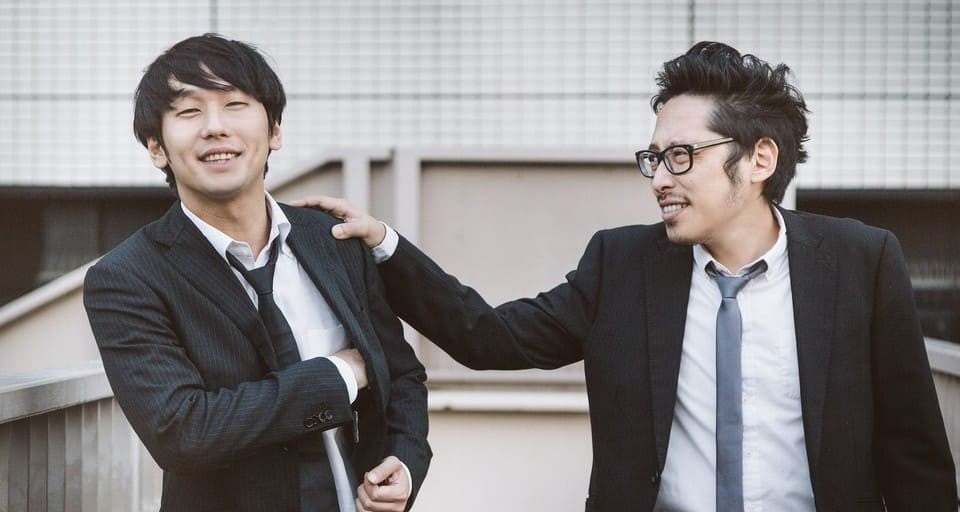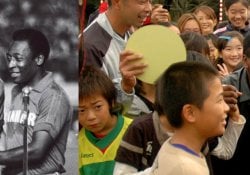The Japanese language is rich in terms and expressions that represent different hierarchical levels, especially in military, school and business contexts. In this article, we will explore words like “taichou” and “heichou” and similar ones, highlighting their meanings, origins and uses. Understanding these words will help deepen your understanding of Japanese language and culture.
In Japan, hierarchy and organizational structure play a crucial role in maintaining order and promoting a harmonious and efficient work environment. Now it's time for you to finally understand the terms used in the workplace and beyond.
We also recommend reading:
- Keigo – Formality in the Japanese Language
- What is the interest rate in Japan? Why is it so low?
- Japanese words and phrases for factory work
[長] Chou - Position in Japanese
Have you noticed that position names in Japanese most often end with "chou"? The character "長" (chou) is a common kanji used in many terms related to hierarchy and leadership positions in Japan.
The etymology of the character "長" goes back to classical Chinese writing with the meaning of "long", "lengthy" or "extensive" in terms of size, time or quantity.
However, in terms of hierarchical positions, the meaning of "長" is more related to the idea of "boss", "leader" or "superior". The idea of size passes full reference to the merit of a person.
This ideogram is often used as a suffix to denote the person responsible for leading or supervising a specific area, function or group of people.
Shachou (社長) and Fuku-shachou (副社長)
Shachou and Fuku-shachou are Japanese terms that describe the highest positions in a business organization. They are fundamental for decision-making and supervision of the company's activities.
Shachou - President and CEO
Shachou (社長) is the president or chief executive of a company. This position is responsible for leading the organization and making important decisions that affect the direction of the company.
The term is composed of the kanji characters "sha" (社), meaning "company" or "corporation", and "chou" (長), meaning "boss" or "leader". Shachou therefore represents the person who leads the company.
Fuku-Shachou - Vice President
Fuku-shachou (副社長), on the other hand, is the vice president of an organization. This position acts as the president's right hand, assisting in management and decision-making. Fuku-shachou is responsible for leading important projects and operations, ensuring the company achieves its goals.
The term is formed by the kanji characters "fuku" (副), meaning "vice" or "assistant", and "shachou" (社長), meaning "president" or "executive director". Fuku-shachou thus indicates the person who works directly with the president in leading the organization.

Rijichou (理事長) - Chairman of the Board
Rijichou (理事長) is a Japanese term that describes the chairman of the board of directors of an organization. This position is responsible for overseeing the board and leading the strategic direction of the company or organization.
The chairman of the board plays a significant role in corporate governance, working closely with board members and senior management.
As the leader of the board, Rijichou is responsible for coordinating and chairing board meetings, ensuring that board members are well-informed about the organization's important issues, and facilitating efficient and effective decision-making.
The Rijichou also plays an important role in supervising and monitoring the performance of senior management such as the Shachou (President or Executive Director) and Fuku-shachou (Vice President).
In many cases, the Rijichou acts as a link between the shareholders and senior management, representing the interests of the shareholders and ensuring that the company operates in accordance with the principles of good corporate governance.

The article is still halfway through, but we recommend also reading:
Jichou (事長) - General Manager
Jichou (事長) is a Japanese term that describes the position of General Manager of a specific division or department within an organization. This position is responsible for managing and overseeing the department's operations and leading the team involved.
Jichou's role is similar to that of Bucho (部長), however, the Jichou often oversees a larger department or one with a wider scope of responsibilities. In some cases, the Jichou may be responsible for a regional division or subsidiary of a company, ensuring compliance with the organization's overall policies and strategies.
As the leader of a department or division, Jichou must ensure the efficiency of operations and the achievement of goals set by senior management. Jichou must be able to make informed decisions, manage resources and resolve issues that may arise in the course of operations.

Bucho (部長) - Department manager
Bucho is used to refer to the manager of a department in a business organization. The word is composed of the kanji "bu" (部), meaning "department", and "chou" (長), meaning "boss" or "leader". The person in this position is responsible for overseeing the department's activities and ensuring the smooth running of its staff.
In many Japanese companies, tripe plays a key role in decision-making and is considered an authority figure. In addition, it is common for employees to use the term after their last name as an honorific of address.
An effective Bucho must be able to clearly communicate the department's goals and objectives and ensure that the organization's strategies and policies are correctly implemented in their department.
We recommend reading: Japanese Honorifics - The Meaning of san, kun, chan and others

Kachou (課長) - Section chief
Kachou is a title used to describe the leader of a section within a department in a company. This position is responsible for overseeing and managing a specific section and the people who work there.
The term is formed by the kanji "ka" (課), meaning "section" or "division", and "chou" (長), meaning "chief" or "leader". The person in this position is responsible for managing and coordinating the work of their team, as well as reporting progress to the department manager (bucho).
Section heads often have more experience and knowledge in their area of expertise than their team members. They provide guidance and support, helping the team achieve its goals and ensuring tasks are completed efficiently.

Taichou (隊長) – The Commander
Taichou is a Japanese word that literally translates to "commander" or "team leader". It is commonly used in a military context, referring to the leader of a unit or team. Taichou can also be applied in non-military contexts, such as work groups or organizations where there is a clearly established leadership figure.
The term is derived from the kanji characters "tai" (隊), meaning "team" or "group", and "chou" (長), meaning "boss" or "leader". The combination of these characters indicates a person's position as the leader of a group.
Bucho (部長) is considered a hierarchically higher position than Kachou (課長) because it represents the leadership of an entire department within an organization, while Kachou only leads a specific section within the department.

Heichou (兵長) – The Deputy Commander
Heichou is another Japanese term that expresses a hierarchical level, translated as "sub-commander" or "sergeant". While taichou refers to the leader of a team, heichou is a rank immediately below the leader, acting as a right-hand man or second-in-command.
Like taichou, heichou is made up of two kanji characters: "hei" (兵), meaning "soldier", and "chou" (長), which again means "boss" or "leader". The combination of these two characters suggests that the person in this position is responsible for leading soldiers or members of a team.

Senpai and Kouhai
In addition to the business hierarchies we just saw, there are also the famous Senpai and Kouhai, which are used in any environment, especially school, to refer to the rookie and veteran.
- Senpai (先輩) - Senior: In school and professional contexts, senpai is someone with more experience or seniority than someone else, usually helping or mentoring younger ones.
- Kouhai (後輩) - Junior: The kouhai is the opposite of senpai, being a younger or less experienced member who receives guidance and support from senpai.
If you want to know more about Senpai and Kouhai, we recommend reading our article now: Senpai and Kouhai - What is the meaning and the relationship between them?

Other Terms of the Japanese Hierarchy
There are many other hierarchical terms in Japanese that describe different positions or relationships. Some of them include:
- Keiri (経理) - Financial Manager: The financial manager is responsible for managing a company's finances, including budgets, accounting, and financial analysis.
- Shunin (主任) - Supervisor: The supervisor is responsible for leading and coordinating the work of a group of employees or team.
- Joushi (上司) - Superior or Boss: Joushi is a generic term used to describe someone in a position of authority or leadership in relation to another person.
- Douryou (同僚) - Coworker: Douryou is used to describe people who work at the same hierarchical level or similar position, with no direct relationship of subordination.
- Tantou (担当) - Responsible: Tantou refers to someone in charge of a specific task or area of responsibility within an organization.
- Shidou (指導) - Advisor or Mentor: The advisor or mentor is someone who provides support, advice and guidance to help others develop skills and knowledge.
- Rijichou (理事長) - Chairman of the Board: Rijichou refers to the leader of an organization's board of directors, usually responsible for overseeing and guiding the strategic direction of the company.
- Torishimariyaku (取締役) - Director: The torishimariyaku is a member of the board of directors of a company, participating in strategic decisions and supervising the management of the organization.
- Jichou (事長) - General Manager: Jichou is the leader of a specific division or department within an organization, responsible for managing and overseeing its operations.
- Kakarichou (係長) - Group leader: The kakarichou is responsible for leading a small group of employees within a section or department.
- Shuunin (主任) - Deputy Manager: Shuunin is an intermediate position between supervisor and department manager, responsible for overseeing a team of employees and ensuring efficient operations.
- Gakuenchou (学園長) - School principal: Gakuenchou is the head of an educational institution, such as a school or university, who is responsible for overseeing administration and teaching.
- Kyoushi (教師) - Teacher: Kyoushi is the term used to describe a teacher or educator, responsible for teaching and guiding students.
- Seito (生徒) - Student: Seito is the term used to describe a student, usually in a school context, who receives instruction and guidance from teachers and other members of the educational staff.
In addition to these, we also have other positions:
- 総長 (Souchou) - President or Chief Executive Officer (in some organizations, such as universities or public bodies);
- 道場長 (Douchou) - Master or leader of a dojo (martial arts school);
- 店長 (Tenchou) - Manager of store or commercial establishment;
- 編集長 (Henshuuchou) - Editor-in-Chief (in publishers or communication vehicles);
- 宗教長 (Shuukyouchou) - Religious leader or major figure in a religious organization;
- 音楽長 (Ongakuchou) - Conductor or musical director;
- 議長 (Gichou) - President of the assembly, as in a legislative chamber;
- 監督 (Kantoku) - Director or coach of a sports team;
- 主査長 (Shusachou) - Head of inspection or quality supervisor;
- 指揮者 (Shikisha) - Conductor (as in an orchestra, although it does not use the character “長”, the term has a similar hierarchical function)
- 教育長 (Kyouikuchou) - School superintendent or director of education
- 資料長 (Shiryou-chou) - Head of the documentation or archive department
- 義務教育長 (Gimu Kyouikuchou) - director of compulsory education
- 総務長 (Soumuchou) - Head of General or Administrative Affairs
- 財務長 (Zaimuchou) - Head of Finance or Chief Financial Officer (CFO)
- 人事長 (Jinjichou) - Head of Human Resources or Director of Human Resources (HR)
These are just a few examples of hierarchical terms in Japanese. The Japanese language has a wide range of words and expressions that describe different levels of authority and relationships, reflecting the importance of hierarchy in Japanese culture and society.
What is the Japanese hierarchical order?
The hierarchy of these titles can vary depending on the specific context, such as in the military, school, or business environment. However, in general, the order of titles mentioned in the article can be sorted as follows:
- Shachou (社長)
- Fuku-shachou (副社長)
- Rijichou (理事長)
- Torishimariyaku (取締役)
- Jichou (事長)
- Bucho (部長)
- Kachou (課長)
- Shunin (主任)
- Kakarichou (係長)
- Taichou (隊長)
- Heichou (兵長)
- Shuunin (主任)
- Gakuenchou (学園長)
- Kyoushi (教師)
- Senpai (先輩)
- Kouhai (後輩)
- Seito (生徒)
- Joushi (上司)
- Douryou (同僚)
- Tantou (担当)
- Shidou (指導)






